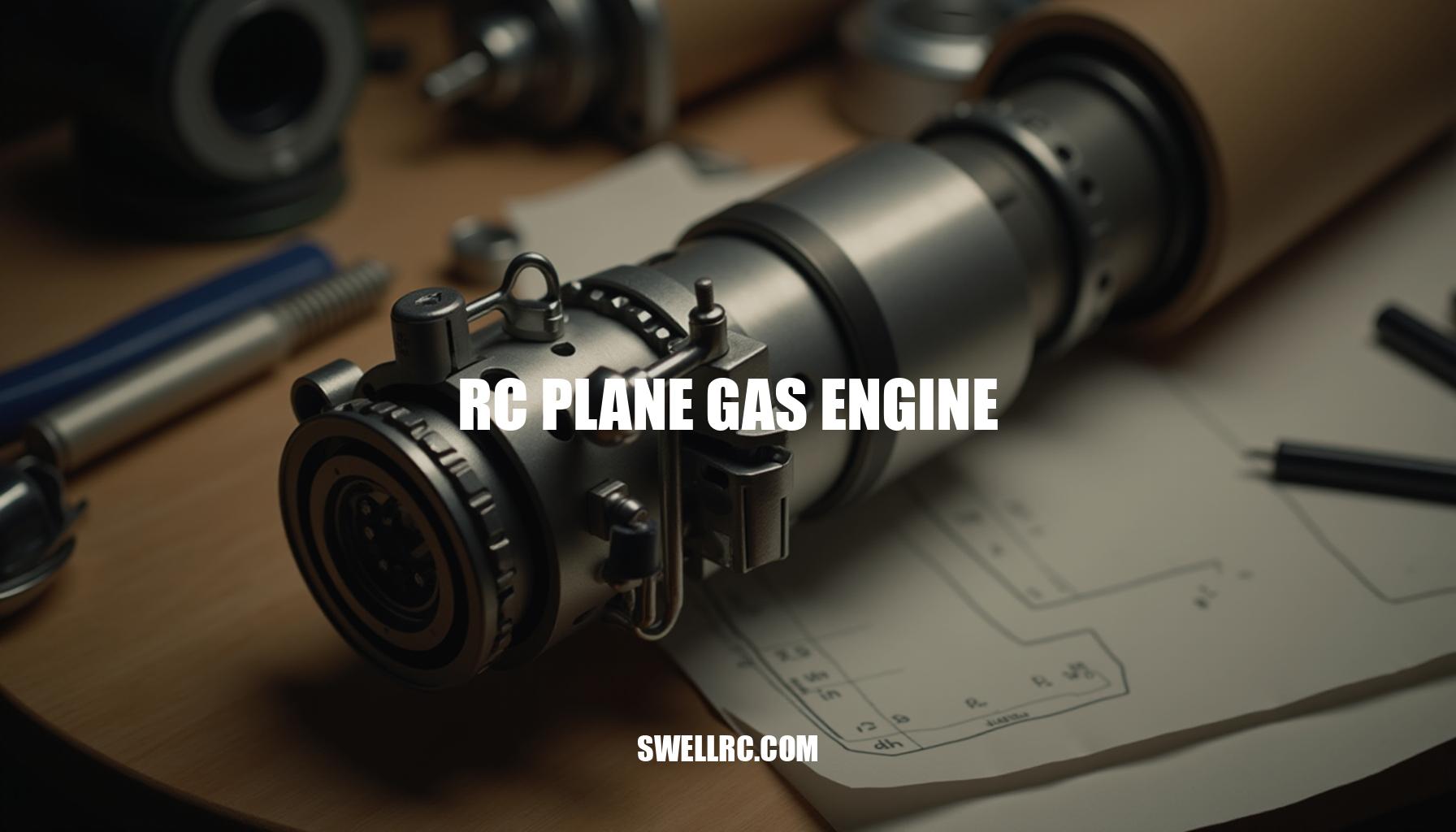The Ultimate Guide to RC Plane Gas Engines
After testing more powerplants than I can count, I finally understood why an RC plane gas engine feels so different the first time I leaned one out on a crisp morning—the throttle comes alive with a throaty bark, and the model surges like it’s got a heartbeat. Gas-powered RC planes run on pump gasoline mixed with oil and sparked by an ignition module, which sets them apart from nitro (methanol-based, glow-ignited) and electric (battery-driven) setups. In this guide, I’ll take you from the basics of how they work to the nitty-gritty of tuning, sizing, and long-term care—sprinkled with lessons I learned from late-night bench sessions and field-side fixes.
We’ll compare gas vs. nitro vs. electric, map engine sizes to airframes, and share pro maintenance routines and troubleshooting steps I actually use.
If you’re brand-new or upgrading from glow or electric, this is the playbook I wish I had. For a broader view of categories and options, see RC model airplane engines. Grab your prop wrench—let’s dive in and boost your rc flight performance by mastering rc airplane engines and understanding the different rc plane motor types available today.
How RC Plane Gas Engines Work (The Mechanical Heartbeat)
At their core, rc plane gas engines are miniature two- or four-stroke internal combustion engines, much like small aviation piston engines in principle. These engines sip a gasoline-oil mix, compress it inside the cylinder, ignite it via a spark generated by an electronic ignition system, and exhaust the spent gases—all seamlessly synchronized by the crankshaft’s rotation and your throttle input.
Here’s a simple breakdown of the working cycle in plain English:
- Intake: The carburetor meters air and fuel into the crankcase or cylinder as the piston rises, often aided by a reed or rotary valve on many 2-stroke rc gas engines.
- Compression: The piston travels upward, compressing the mixture for a powerful burn.
- Ignition: A hall sensor triggers the ignition module; the spark plug ignites the compressed mixture.
- Power stroke: Expanding gases push the piston down, turning the crankshaft and ultimately your propeller.
- Exhaust: Burned gases exit through the muffler or tuned pipe, completing the cycle.
Understanding the rc engine carburetor setup and other key components is vital for optimal performance in gasoline powered rc engines. The table below summarizes main components and their functions:
| Component | What it does | Setup notes |
|---|---|---|
| Carburetor | Mixes fuel and air, sets idle and high-speed mixture | Adjust low (L) and high (H) needles in 1/16–1/8 turns; ensure no air leaks |
| Crankcase/Crankshaft | Houses rotating mass, transfers power | Check bearings; ensure prop is balanced to reduce vibration |
| Piston/Cylinder | Compresses and burns mixture | Break-in gently; maintain good ring seal |
| Reed/Intake Valve | Controls intake timing (on many 2-strokes) | Inspect petals; replace if frayed |
| CDI Ignition & Sensor | Times spark to RPM/advance curve | Secure all wiring; use separate ignition battery or well-filtered BEC |
| Spark Plug | Delivers the spark | Gap typically 0.018–0.024 in; replace when fouled |
| Muffler/Canister | Manages backpressure and noise | Use locknuts and safety wire |
Pro Tuner Tip: To approach peak power, slightly richen the high needle screw until the engine four-strokes at full throttle, then carefully lean it in small increments until the engine runs smoothly with stable RPM and temperature. This technique works well for both 2-stroke rc gas engines and 4-stroke rc airplane engines.
To explore how these engines fit within the broader spectrum of model airplane engines, check out the comprehensive guide at Swell RC: Model Airplane Engines.
Gas vs. Nitro vs. Electric – The Ultimate Comparison
Having flown gas-powered RC planes for entire seasons, I appreciate the unique characteristics each engine type brings to the sky. Gas engines offer a distinctive turbine-like torque, making long flights on just a few ounces of fuel per minute possible. In contrast, nitro engines snap quickly to high RPM with a spicy exhaust note, ideal for those who value razor-sharp responsiveness.
Meanwhile, electric motors deliver instant and perfectly linear thrust for precise control.
Here’s a quick comparison at a glance to help you when choosing between nitro and gas engines or exploring other RC airplane engines:
| Aspect | Gas | Nitro | Electric |
|---|---|---|---|
| Fuel & Cost | Pump gas + 2T oil; low cost per flight | Nitro/methanol; pricier per flight | Electricity; cost shifts to batteries/charger |
| Runtime | Long (15–30+ min typical) | Moderate (8–15 min) | Varies; often 5–12 min unless high-capacity packs |
| Power-to-Weight | Strong torque; heavier engines | High revs; lighter engines | Excellent with modern motors; weight in batteries |
| Starting | Choke, flip or starter; CDI spark | Prime, glow heat, flip | Arm ESC; throttle safety |
| Throttle Feel | Meaty, smooth, slightly laggy vs electric | Razor revs, responsive | Instant and precise |
| Maintenance | Moderate (filters, plugs, carb) | Higher (tuning, residue) | Low (check bearings, ESC cooling) |
| Mess/Residue | Low (oily exhaust film) | High (castor/synthetic residue) | None |
| Noise | Deep bark, canister reduces | High-pitched scream | Quiet to moderate prop noise |
| Best For | Medium to giant scale endurance and realism | Smaller sport/3D where revs rule | Park flyers to high-power 3D; simplicity |
When I transitioned from nitro to gas on a 30cc aerobatic plane, the most notable difference was the impressive RC plane fuel efficiency—flying smooth patterns felt less about counting seconds and more about enjoying sustained flight. Yet, electric setups still lead in offering silent dawn flights and that immediate punch in RC flight performance.
If you’re diving deeper into the nitro realm, check out the detailed guide on RC plane nitro engines. For those curious about the latest in electric propulsion, explore the comprehensive insights on RC electric motors for airplanes. Ultimately, your ideal choice hinges on your airframe, flying environment, and the kind of exhilaration you seek in your airborne adventures.
Choosing the Right Gas Engine for Your Aircraft
Picking the perfect best gas engine for RC planes starts with key factors such as displacement (cc), prop size, and the airframe’s weight and mission. As a rule, higher displacement allows swinging bigger props and delivers more static thrust; the right prop helps keep RPM in the engine’s happy band for optimum performance and RC plane fuel efficiency.
Understanding the differences in RC plane motor types is crucial. In plain terms:
- 2-stroke RC gas engine: Lighter, mechanically simpler, and ideal for aerobatics and 3D flying where power-to-weight ratio and throttle response bursts matter most.
- 4-stroke RC airplane engines: Heavier but smoother with a more authentic scale sound and torque curve, perfect for warbirds and classic models. You can explore more options for 4-stroke engines here.
To help with sizing, here are approximate starting points to match your airframe’s lift and mission:
| Category | Typical AUW | Displacement | Stroke Type | Prop Examples | Notes |
|---|---|---|---|---|---|
| Trainer/Sport | 6–10 lb | 20–30cc | 2-stroke | 17×8, 18×8 | Smooth idle, easy handling |
| Pattern/IMAC | 12–20 lb | 35–60cc | 2-stroke | 20×8–24×10 | Favor crisp throttle; balance CG |
| 3D Aerobatic | 12–30 lb | 35–120cc | 2-stroke | 22×8–28×9.5 | Keep RPM mid-high; light spinner |
| Warbird/Scale | 12–35 lb | 35–120cc | 4-stroke or torquey twin | 20×10–28×12 | Sound/torque over peak RPM |
| Giant Scale | 30–50+ lb | 100–170cc | Twin 2-stroke | 27×10–32×10 | Vibration isolation matters |
A quick field note from experience: My 30cc sport ship wakes up with a 19×8 wood prop to gain quicker spool times, while my 60cc Extra thrives on a 24×9 carbon prop, providing the perfect bite without overspeeding.
If you’re searching for proven airframes that pair exceptionally well with gas power, be sure to browse the best gas-powered RC planes collection. This ensures seamless integration of your chosen RC plane motor types with optimized fuel efficiency and performance.
Maintenance, Tuning, and Longevity Secrets
Treat your gas engine like a tiny aircraft powerplant and it will pay you back with seasons of dependable flights. Here’s my field-tested routine incorporating rc engine maintenance tips for optimal performance and longevity:
- Pre-flight inspection: Check prop bolts, muffler bolts, and ignition leads. Wiggle-test the carburetor and reed block for leaks to ensure proper rc engine carburetor setup.
- Air and fuel filtration: Use a quality clunk, in-line filter, and filtered fueling can. Replace filters each season for gasoline powered rc engines to maintain rc plane fuel efficiency.
- Carb tuning: Warm up the engine, set idle around 1,800–2,200 RPM. Tune the low needle for a clean transition, then fine-tune the high needle at WOT (wide open throttle) for peak RPM without sagging.
- Spark health: Keep a spare spark plug on hand. If idle becomes unstable or the engine is harder to start, swap the plug and re-gap it.
- Vibration management: Balance props and spinners meticulously. Isolate ignition components with foam mounts and securely fasten all wires to prevent loosening.
- After-run care: Wipe down the engine, check for oil seepage, and add a few drops of after-run oil if storing the plane for months.
- Seasonal service: Replace fuel lines, inspect bearings, and verify that ignition batteries hold proper capacity.
Here is a quick-reference rc plane engine troubleshooting guide to help diagnose and fix common issues:
| Symptom | Likely Cause | Fix |
|---|---|---|
| Hard starting when warm | Too rich low needle; flooded crankcase | Lean low needle 1/16 turn; open throttle and flip with ignition off to clear |
| Sputtering idle | Air leak or worn plug | Check gaskets/lines; replace plug |
| Cuts out on punch-out | High needle too lean; fuel starvation | Richen high needle 1/16–1/8 turn; verify clunk orientation |
| Midrange burble | Low needle too rich | Lean low needle in tiny steps; re-check transition |
| Overheating | Too lean; cowling airflow poor | Richen high needle; add baffles and exit vents in cowling |
| Random misfire | EMI or weak ignition battery | Reroute ignition leads; test or replace battery pack |
| Vibration loosening bolts | Unbalanced prop or spinner | Rebalance components; use threadlocker and safety wire |
Longevity reality: With sane tuning and clean fuel, small single-cylinder engines routinely deliver 100–200 hours before major service; twins often go longer thanks to smoother running characteristics. A few minutes of care per session is what keeps them in that sweet, reliable groove, enhancing rc plane fuel efficiency and overall performance.
Extreme Performance and Innovations in RC Engine Tech
I never expected this level of precision from small gasoline powered RC engines until I pulled a modern CNC-billet twin from its box: crank tolerances like jewelry, balanced to the gram, and an ignition curve that keeps torque flat through the climb. Innovation in model airplane gas engines continues to push the boundaries, delivering rc flight performance that truly impresses.
We’re seeing larger displacements paired with lighter cases, reed-valve timing that breathes smarter, and exhaust systems designed to add power while shaving noise. These advancements redefine what high-horsepower RC engines can achieve in the air.
Some standout innovations I’ve flown or witnessed include:
- Lightweight twins in the 70–120cc range delivering superb smoothness alongside telemetry-ready CDI modules.
- Advanced coatings and ring designs that ensure consistent compression and make break-in periods easier.
- Optional canisters specifically tuned for thrust enhancement without the typical exhaust bark.
- Experimental EFI and auto-choke systems featured in high-end builds, showcasing cutting-edge tech integration.
For enthusiasts focused on sheer scale, the turbine world is also pushing limits — check out the largest RC jet engine (here) to appreciate how far miniature propulsion has come.
Meanwhile, those shopping for piston engines should explore model airplane gas engines to see how manufacturers are packaging these innovations for real airframes.
Watching a giant-scale aerobat hover smoothly on a silky 120cc twin is proof that precision manufacturing has transformed raw gasoline into smooth, repeatable performance, elevating RC plane gas engine innovations to new heights.
Conclusion: Why the Gas Engine Still Rules the RC Sky
After years of swapping motors and chasing the perfect tunes, I keep returning to rc airplane engines fueled by gas for their unique blend of endurance, captivating sound, and that satisfying mechanical connection. With a rc plane gas engine, you enjoy long, confident flights paired with a torque curve that makes big props honest performers, resulting in amazing rc flight performance. This setup truly rewards careful hands with rock-solid reliability.
In our detailed exploration, we walked through the combustion dance, weighing the pros and cons of gas engines against nitro and electric options.
We also discussed how to size engines appropriately to your airframe and highlighted the essential rc engine maintenance tips that extend the life and efficiency of your motor.
If you’re ready to select the best gas engine for rc planes or simply want to compare different options side by side, be sure to bookmark RC airplane engines. My standing advice: experiment. Try different prop pitches, re-baffle your cowl, or nudge a needle just 1/16 turn and carefully note every change in performance.
The magic of an rc plane gas engine isn’t just in the numbers; it lives in the moment your model lines up, the throttle comes in, and that deep, powerful note carries it skyward as if it was made for this.
See you at the flightline!
Frequently Asked Questions
- What’s the difference between gas, nitro, and electric RC plane engines?
Gas engines burn pump gasoline with oil and use a spark ignition—long runtimes, low fuel cost, deep sound, and moderate maintenance. Nitro engines burn methanol/nitromethane with a glow plug—high revs, shorter flights, more residue, and frequent tuning. Electric uses batteries and brushless motors—instant throttle, low maintenance, and quiet operation, with flight time limited by battery capacity. - Are gas engines more powerful than electric motors in RC models?
Power depends on the specific setup. Electric can deliver extremely high power-to-weight with instant torque, especially on high-voltage systems. Gas engines excel at sustained torque and long-duration flights with large props. For giant-scale models, a well-matched gas engine provides ample thrust and endurance, while top-tier electric systems can match or exceed peak power at the cost of heavier battery packs and shorter flights. - How long do RC plane gas engines last?
With clean fuel, proper filtration, correct tuning, and periodic bearing/plug service, singles often run 100–200 hours before major work, and well-treated twins can exceed that. Abuse, overheating, or dirty fuel shortens life quickly; meticulous maintenance and good cooling extend it substantially. - What’s the best size gas engine for large RC planes?
For 80–92 inch aerobats and warbirds, 50–60cc is a common sweet spot. For 92–120 inch giant-scale models, 70–120cc twins are popular, while 35–42% aerobats may use 100–170cc twins. Match displacement to weight, prop diameter/clearance, and your flying style (pattern vs 3D vs scale). - How do you maintain and store a gas-powered RC engine?
After each session, inspect bolts and lines, clean the engine, and verify carb settings. Use quality filtration, keep the spark plug fresh, balance the prop, and secure ignition wiring. For storage, drain fuel, add a few drops of after-run oil, protect from dust, and cycle the ignition battery monthly. - Are 2-stroke or 4-stroke engines better for RC planes?
Neither is universally better—it depends on the mission. 2-strokes are lighter and make lively power for aerobatics and 3D. 4-strokes deliver a smoother, more scale sound and torque curve that suits warbirds and classics. Choose by airframe weight, prop size, and the flight feel you prefer. - How do I start a new RC gas engine safely?
Secure the model, keep spectators clear, and set throttle to low. Choke until you get a pop, open the choke, then flip with a glove or starter until it fires. Verify a rich baseline on both needles for break-in, check ignition timing and battery, and keep hands and clothing away from the prop arc at all times.



